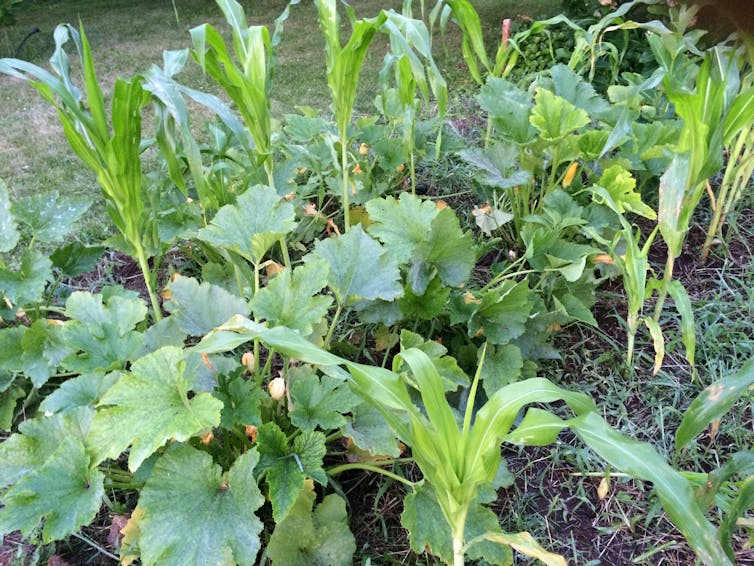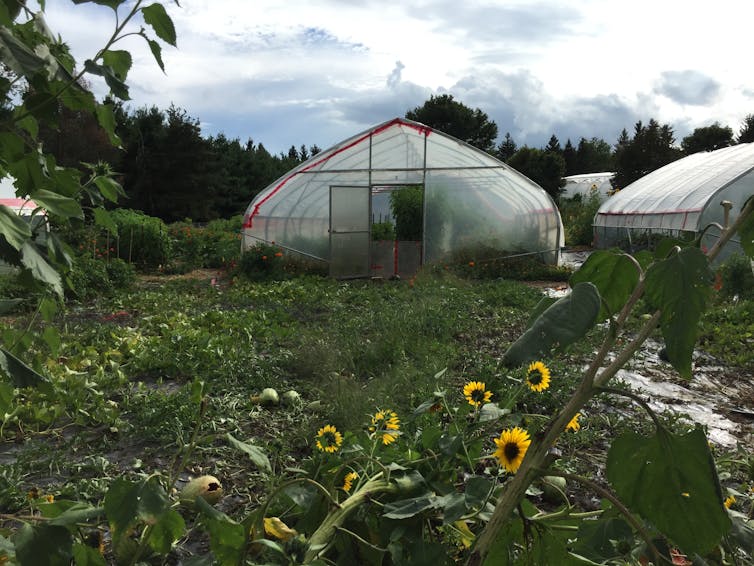
By Profs Hannah Tait Neufeld, Brittany Luby and Kim Anderson
As we learn more about climate change, this knowledge can be paralyzing, especially for young people who are contemplating life pathways.
Indigenous land-based learning offers an avenue for hope, embedded in action. This approach has been taken up in recent years by a number of post-secondary institutions in Canada and internationally.
This is the focus of our work — as mixed ancestry (Hannah), Anishinaabe (Brittany) and Metis (Kim) scholars at the University of Guelph in Ontario. According to Indigenous ways of knowing, we are only as healthy as our environments. And so our research addresses sustainable food practices that feed the well-being of “all our relations:” human, land, spirit.
Using food as a starting point for action, we have launched a community-based research program — to promote conversations and opportunities across geographic and social spaces that forge and rekindle relationships focused on traditional foodways.
This work starts with relationships, and it involves labour — both of which are critical to Indigenous pedagogy. With Indigenous community partners, we engage social science, nutrition and engineering students in hands-on work in Indigenous food and medicine gardens and in manomin (wild rice) fields.
This enables us to focus on time-honoured relationships in our homelands and university lands while preparing for the future.
‘Green shoots that grow after a fire’

The relationship that Indigenous peoples have with the land encourages practices and traditions that perpetuate healthy families and communities. On- and off-reserve, momentum is building and communities want to be involved in building opportunities for learning and social interactions around food.
In collaboration with other Indigenous faculty, students and a growing urban network, we have been working to expand gardens in the wider Grand River Territory and at the University of Guelph — on the ancestral lands of the Attawandaron people and the treaty lands and Territory of the Mississaugas of the Credit. We work together to strengthen land-based relationships and local food sovereignty.
In an effort to address community needs in southwestern Ontario, our on-going research is designed to engage a diverse group of partners, collaborators and knowledge users. Garden sites have been established with the assistance of the local Indigenous community at the University of Guelph Arboretum — to address food access and knowledge barriers and explore innovative land-based education and practices.
Since the spring of 2018, a group of committed community members, faculty and students have planted and nurtured edible and medicinal plants. The gardens are known collectively as Wisahkotewinowak, which means “green shoots that grow after a fire.”
The garden brings together community agencies such as: the Grand River Métis Council, White Owl Native Ancestry Association and Global Youth Volunteer Network. Elder-led workshops on medicinal plants, and preservation methods have taken place throughout the four seasons.
This project has strengthened inter-generational and inter-regional relationships. Using food as a starting point, conversations and opportunities for sharing allow people to share their knowledge and to forge relationships with the land and each other.
Histories of loss offer clues for regrowth
In some cases, however, environmental change has limited the ability of Elders to pass on traditional knowledge through hands-on activities such as planting and harvesting foods.
Such is the case at Dalles 38C Indian Reserve from which Brittany’s Anishinaabe ancestors originate. Upstream and downstream dams control the flows into and out of the Winnipeg River which runs through the reserve.
Water depths within manomin (wild rice) habitats have been altered by hydroelectric development and continue to be subject to fluctuations during the growing season that do not resemble the natural patterns to which manomin adapted.
Discharges from upstream sources have also affected sediment and water quality. These sources include the community of Kenora and a pulp and paper mill which ceased operation in the 2000s.
Researchers at the University of Guelph have partnered with the Economic Development Committee at Dalles 38C Indian Reserve to determine which factors are limiting the growth of manomin and to develop management strategies to control these factors.
The traditional knowledge of Elders — shared through interviews and river tours — aids in understanding the historical relationship between water fluctuations, urban discharge and the growth of manomin.
By combining traditional knowledge of manomin with more recent observations about riverine change, youth involved in the research can begin to understand that histories of loss may, indeed, provide clues for regrowth. This changed lens results in a future-oriented view of the Winnipeg River that challenges the nature and duration of settler-industrial landscapes.
Elder knowledge allows youth to envision compromised fields as productive Anishinaabe spaces.
All our Relations
University research and teaching through projects like the Wisaktowinowak gardens and the manomin/wild rice project create new opportunities for youth and Elders to interact, both on campus — by planting seeds — and in Anishinaabe homelands through the revival of traditional harvesting.
It’s the land that brings us together, the land that teaches relationship-based ways of knowing about the natural world and its food systems.
And with the increasing uptake of post-secondary land-based education, we may just change the way upcoming generations envision our environment and shape the future that unfolds on it.![]()
